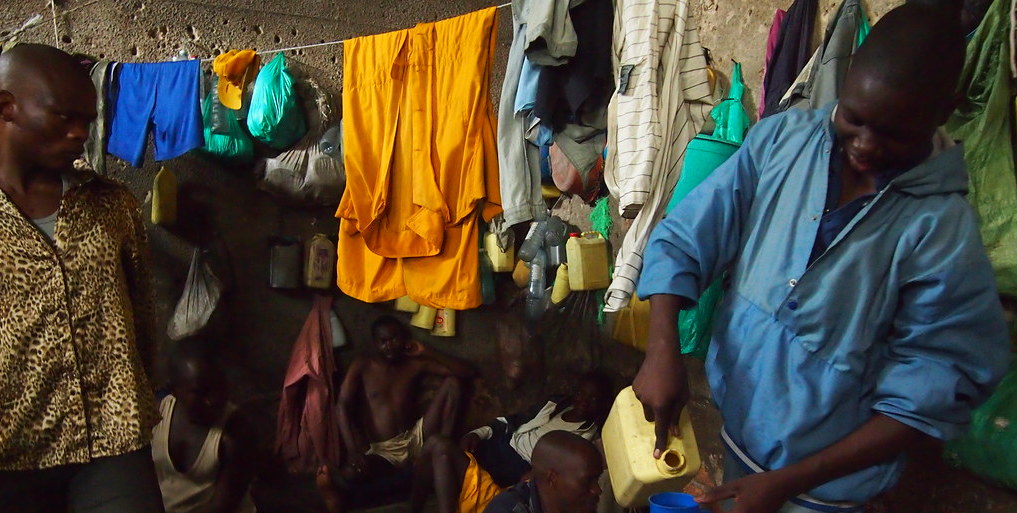Prisons-Boot Camps for Crime and Terror
October 9, 2019 | Expert Insights

Background
Collapsing correctional system, the world over remains on the blind side of public consciousness until, following a sudden eruption of an orgy of violence, they get headlined for a few brief moments.
The concept of state prisons was born in Europe in the 16th Century as temporary holding pens before trials. These were little better than filthy medieval dungeons herding together people of all ages irrespective of sex, age, nature of crime and its severity. The first baby steps towards prison reforms came in the 17th Century with the introduction of permanent prison staff and rehabilitation of inmates through education and vocational training/labour. The 19th Century English philosopher Jeremey Bentham introduced a utilitarianism theory to help create a moral standard for the rehabilitation and treatment of inmates. His propagated the idea that inmates were rehabilitable.
Analysis
Angered and frustrated by rising crime rates and gang killings, civil society has become immune to the living conditions of the inmates. As per Juan Mendez, UN Special Rapporteur, “Imprisonment has become an almost automatic response rather than a last resort [...]. Furthermore, the penitentiary system in most countries is no longer aimed at the reformation and social rehabilitation of convicts but simply aims to punish by locking offenders away”. In 2013, the European Court of Human Rights ruled that conditions in overcrowded prisons qualifies as torture and/or inhumane treatment
To say that today prisons all over the world are overcrowded would be an understatement. They are in fact, filled way beyond their capacities and are bursting at the seams. Documented data shows 10.2 million incarcerated with half of them in in the US, China, Russia, Brazil and India alone. Overcrowding is the rule rather than the exception- Brazil 150%, Mexico over 133%, El Salvador 310% and Philippines 316%. In Africa, it goes as high as 363%!
Bloody prison riots followed by police brutalities have become a frequent occurrence. According to the UN Agency, Commission on Crime Prevention & Criminal Justice (CCPCJ), the prison systems in developing countries despite having lower imprisonment rates experience higher rates of overcrowding, due to infrastructural deficiency.
When penitentiary systems are overstretched and poorly managed, prisons run the risk of degenerating into dangerous places for both inmates and prison staff and can even turn into “nurseries” for hardened criminals. Drug cartels in Mexico and Colombia get most of their best recruits from within the prison system.
More worrying is the fact that while billions are spent on the war on terror, prisons have become schools for mass radicalisation. This should come as no surprise. Prisons are ‘places of vulnerability’, which produce ‘identity seekers’, ‘protection seekers’ and ‘rebels’ in greater numbers than other environments. They provide near-perfect conditions in which radical, religiously framed ideologies can flourish. Over-crowding and under-staffing amplify the conditions that lend themselves to radicalisation. Badly run prisons make the detection of radicalisation difficult, and they also create the physical and ideological space in which extremist recruiters can operate at free will and monopolise the discourse about religion and politics.
Overcrowding is the legacy of outdated colonial-era criminal justice which processes cases at an agonisingly slow pace with huge backlog of pending cases, resulting in a large population of undertrials in prisons. Some crimes are simply not given the option for parole, which holds inmates in the system for an extended time or even life, adding to the crowding. The percentage of under-trials is also high leading to congestion-India 67%, Mexico 39% and Brazil 35%.
It is complicated for a layman to understand the level of overcrowding wherein prisoners have to sleep on top of each other, on top of each, or in shifts, or tie themselves to window frames so they can sleep while standing. Unsanitary prison conditions make them vulnerable to diseases such as tuberculosis and HIV, five times more likely than the general public.
Assessment
- Since law enforcement systems have failed to bring down spiralling crime rates and thus reduce prison populations, alternatives are -- programmes like house arrest, increasing the scope for grant of parole and quick release for minor crimes. Of course, countries can increase capacity by building larger prisons but that would need lots and lots of investment.
- Technological systems are a viable solution for alternate custody, especially in respect to non-violent crimes. Fitted with tamper-proof body sensors, inmates are let out but their movements are monitored 24 x 7 by parole officers. Bagaric, Hunter, and Wolf explain that “If they attempt to escape, commit harmful acts, or disable or remove their body sensors, the computers monitoring the events will instantly activate the CEDs embedded in their ankle bracelets to administer electric shock”.
- Another viable alternative would be the wider application of acts similar to the Indian Goonda Act. The genesis of this can be traced backed to 1923 in British Era when such special law was enacted to control rowdies or goondas in Calcutta and for their removal elsewhere. The act is in force in some Indian states and denies access to the offender in specified areas, exiling him/her from municipal limits of a city for up to six months and requiring the person to notify movements or to report to a specified place at specified timings.
Image Courtesy: flickr.com








Comments